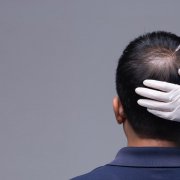Hair Transplantation Methods Explained
When people think about health conditions, they usually don’t pay too much attention to their hair. Most people only notice hair loss in its advanced stages. While it’s true that losing hair doesn’t directly impact physical health, it can still cause stress and affect your mental health.
Fortunately, we have effective hair loss treatments, one of which is transplantation. Each hair transplantation method has its own set of benefits and drawbacks. Knowing how each option works can help you choose the appropriate hair restoration technique for your needs.
General Principles Of Hair Transplantation
What Makes Hair Transplantation Possible
Hair follicles are self-contained units, allowing them to survive when transferred to different areas of skin. Each hair follicle has components that create the hair structure, add pigment, and lubricate the hair shaft. As long as the follicle can access a rich blood supply, they will still function in suitable skin areas.
Sections with existing hair can tolerate some loss of follicles without any noticeable effects. Thus, sufficient hair follicles from a suitable donor site can repopulate thinning areas on the recipient site.
The Hair Transplantation Procedure
Hair loss treatment through transplantation is a relatively low-risk procedure. It does not require general anesthesia and has few possible complications. Generally, a dilute local anesthetic solution is injected into the operation site.
Hair follicles are then harvested from the donor site and inserted into the recipient site. During this step, your hair surgeon will follow a pattern mimicking the arrangement of adjacent hair. Sometimes, the follicles are first submerged in a protective solution to prevent drying.
Hair Transplantation Techniques
Many transplant techniques exist, but the most prominent ones are follicular unit transplant (FUT) and follicular unit extraction (FUE). Both methods provide doctors with granular control over the transplant process. The two primarily differ on the techniques used to harvest and prepare follicles for transplant.
Follicular Unit Transplant (FUT)
This method of hair restoration involves removing strips of skin containing suitable follicles from the donor site. The procedure may require the use of multiple strips, which are usually a few millimeters thick. The obtained tissue is trimmed of excess fatty tissue to facilitate the isolation of the follicle units. However, a layer of around two millimeters is left to protect the follicle.
The technician uses magnification to identify and isolate individual follicle units manually. The grafts are then immediately placed in a cooled saline solution to protect them from drying out. Once enough follicle units are available, the donor site is closed using sutures, and the recipient site is prepared for grafting.
The FUT procedure is relatively simple. Completion times are also shorter compared to FUE. Perhaps most importantly, the risk of damaging the follicle units during harvesting is low. As long as the provider uses proper techniques and has adequate lighting, nearly all follicles should survive the transplant.
Follicular Unit Extraction (FUE)
Follicular unit extraction involves making punch holes into the donor site to isolate individual follicle units. Your doctor will use a specialized punching tool to make circular cuts with a diameter of around one millimeter. The punch is aligned with the direction of the hair follicle to prevent the sharp edge from cutting into the follicle itself.
Once the follicle units are isolated by the punch, your doctor will use forceps to delicately remove them from the donor site. Like FUT, the units are submerged in a chilled saline solution while they prepare the recipient site. In some cases, the units may also be directly transferred to the recipient site.
More doctors prefer FUE over FUT for hair loss treatment. The punch technique leads to:
- Lower pain levels after the procedure
- A faster recovery period
- Less scarring
Doctors can also target more specific follicles, including those from typical donor sites. Finally, more grafts can be collected through FUE.
However, FUE requires more skill to execute, and the procedure may also take longer. Additionally, there is a higher chance of cutting through the follicle, rendering it unusable.
Other Techniques
In addition to FUT or FUE, some doctors may also consider other techniques for hair restoration. In flap surgery, a skin strip is cut such that one end remains attached to the scalp. This strip is pivoted into the recipient area, ensuring that it continues to receive some blood supply from its original location.
Meanwhile, scalp reduction involves the removal of bald skin areas. The surrounding sections containing healthy hair follicles are pulled into the gap, allowing more hair-bearing skin to cover the scalp.
Hair Transplant Services In Kansas City, Des Moines & Liberty, MO
There are many surgical options for hair loss treatment, including FUT and FUE. To help you choose the best treatment method, consider a visit to an experienced hair restoration doctor.
Here at Darling Hair Restoration, we focus on cutting-edge techniques to treat and manage hair loss. Dr. Darling has expertise in both surgical and conservative treatments. You can rest assured that he’ll guide you to the most optimal approach for your needs.
Reach out to us by calling (816) 792-3400 or filling out our online contact form. We look forward to serving you!










